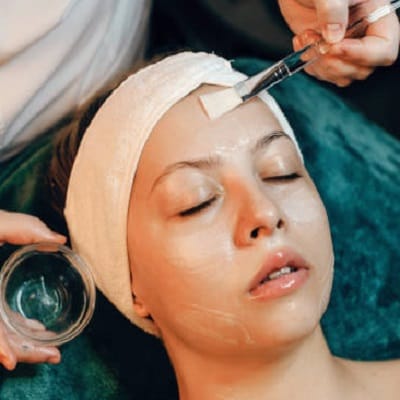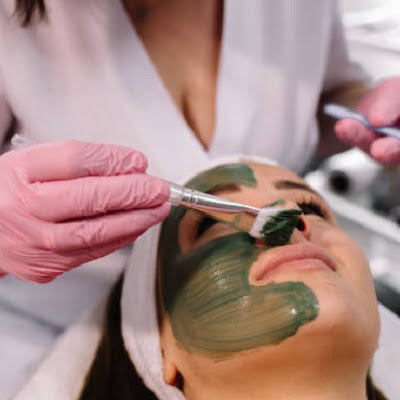Chemical peel treatment is the best and most non-invasive approach to tone, resurface, and structure your facial layer better. Moreover, under these treatments, experts will apply chemical solutions to facial issues. Hence, this unveils fresh, healthy skin underneath the top layers. However, they may assist with many skin issues. However, it is crucial to understand Do Chemical Peels Work Permanently in Islamabad. So, read this blog till the end to understand it completely.
What are Chemical Peels?
Chemical peels remove dead cells and promote the growth of new ones, therefore obtaining results. Under this approach, a chemical solution is applied to the face. Moreover, the sort of peel determines the many layers of skin this treatment passes through.
Moreover, there are many types of these peels.
- Superficial peels: These target the top layer, the epidermis. Moreover, it can treat minor issues such as uneven tone and lackluster skin. Furthermore, it really requires little time.
- Medium peels: These work through the middle layers of the skin. Moreover, look after fine wrinkles, uneven skin tone, and acne scars. Further, it takes longer than for superficial peels to recover.
- Deep peels: They reach deeper to treat severe wrinkles, scars, and sun damage. Hence, they show remarkable results but require a lot of downtime.
Do Chemical Peels Work Permanently in Islamabad?
People want to know, Do Chemical Peels Work Permanently in Islamabad? The quick response is no; the effects of this therapy are transient. Though they significantly improve the appearance and feel, the effects are temporary as skin ages and environmental factors like sun exposure alter it over time.
Factors That Influence Longevity:
Type of Peel:
Deep peels have the most protracted effects—often for years. However, if your peel is superficial or medium, you could have to get maintenance treatments every few months.
Skin Type and Condition:
Younger and healthier skin could prolong the results. Further, very severe issues may need more frequent treatment.
Lifestyle Choices:
Maintaining your face free from the sun and in good condition will assist in preserving the results. So, it may be less effective if you smoke, eat badly, or neglect to drink enough water.
Aging Process:
Getting older brings regular changes like loss of suppleness and new lines. Although the results may not stay indefinitely, regular chemical peels can keep your skin appearing youthful and healthy.
Benefits of Treatment:
In many respects, chemical peels may help your face keep and appear healthy.
- Reduce fine lines and wrinkles.
- Feel and look better about your skin.
- Minimize the appearance of acne scars and patches.
- Correct sun damage and get an improved tone.
- Get your body to produce more collagen to have more robust skin.
- If you treat it correctly after a treatment, these results may remain for months. Moreover, consistent treatments help you appear your best over time.
How to Extend the Results?
- Broad-spectrum sunscreen may help protect you from potentially harmful UV light. If you’re outdoors, put it on once every two hours.
- Follow a skincare schedule. Wash often, moisturize, and exfoliate it, and follow your doctor’s advice.
- Avoid alcohol and tobacco. Both may cause chemical peels to be less effective and accelerate your aging.
- Schedule regular care treatments. Regular shallow or medium peels can assist you in extending the effects.
- Eat a good diet and keep hydrated. Healthy face consumes meals heavy in nutrients and is well-hydrated.
The Best Clinic for Chemical Peels in Islamabad:
SKN Cosmetics Islamabad is the best clinic for this treatment and all other skin treatments. Moreover, we have a team of highly qualified aestheticians, surgeons, and other supporting staff. Furthermore, the testimonials and customer feedback show our success rate. Similarly, we have modern tools and techniques at hand. Modern therapies and excellent physicians are hallmarks of our clinic. We offer customized skincare treatment.
Final Thoughts:
Chemical peels are a fantastic approach to making your skin seem younger and assisting with many issues, even if they do not provide long-term advantages. If you pick the correct kind, follow a skincare regimen, and lead a healthy lifestyle, peels will offer you with long-lasting, brilliant outcomes. Experts say chemical peels are among the most excellent methods to keep your skin youthful and healthy.
Book Your Appointment:
Are you prepared for a skin change? See our most experienced and certified aesthetic physician at SKN Cosmetics Islamabad right now to find out more about the advantages of chemical peels and which peel suits you best.









